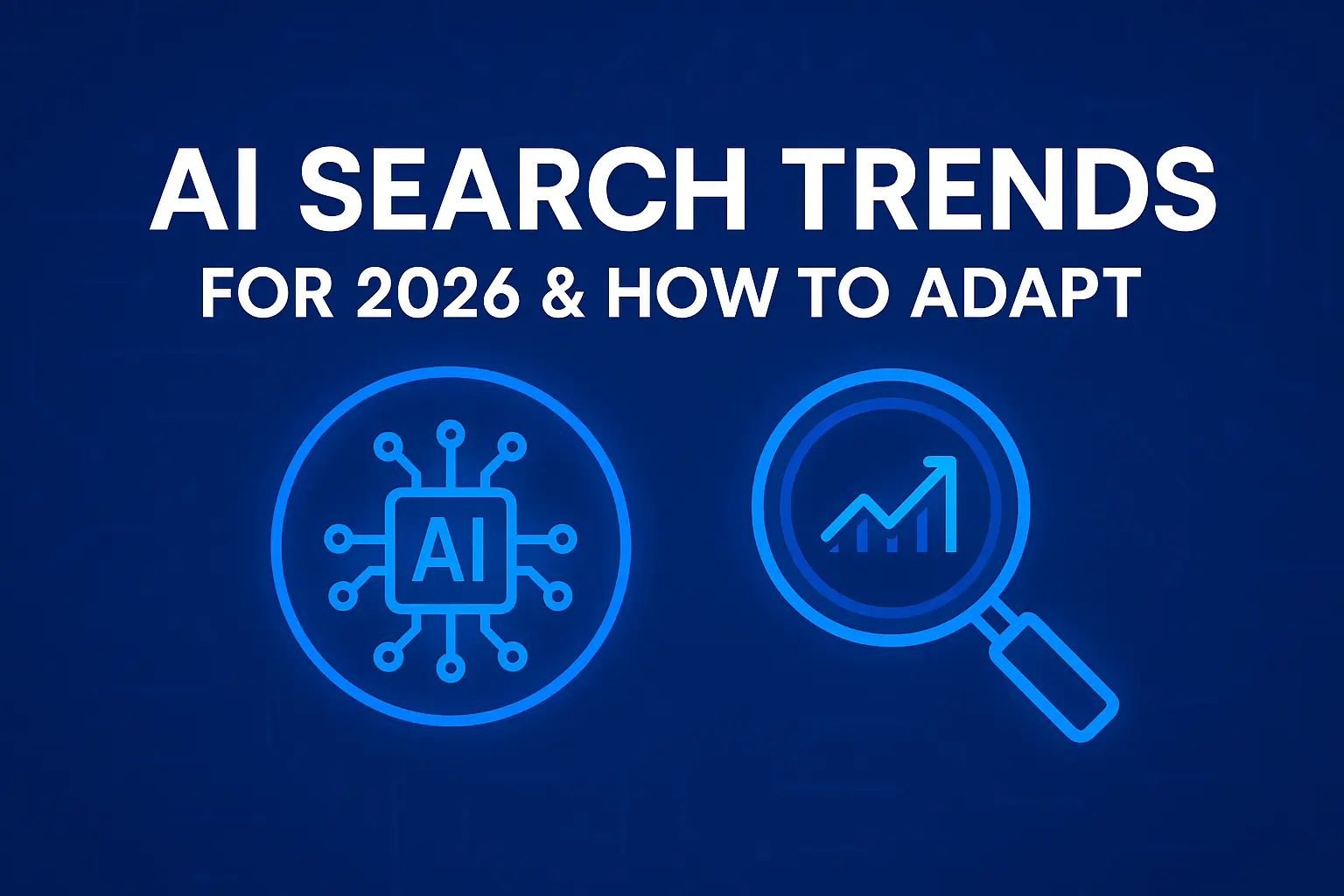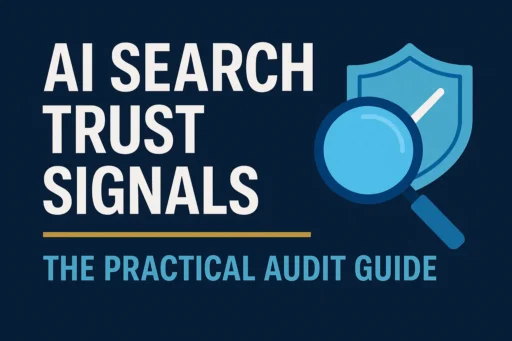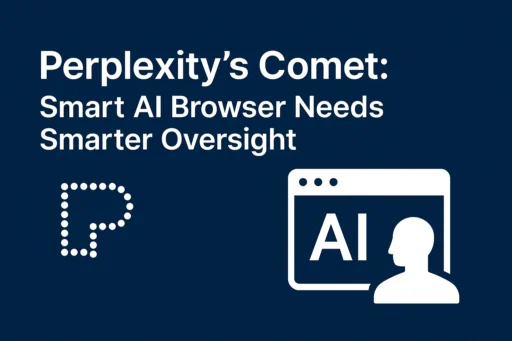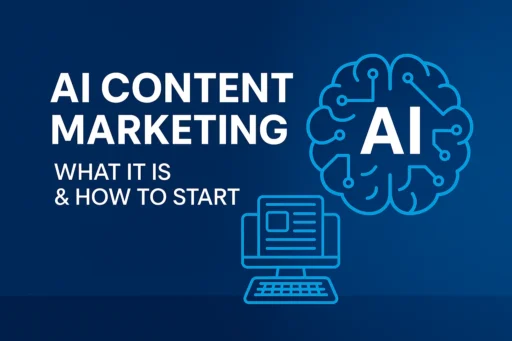The search landscape is undergoing its most dramatic transformation since Google revolutionized the internet over two decades ago. AI Search Trends are reshaping how billions of people discover information, make purchasing decisions, and interact with brands online. As we look toward 2026, understanding these shifts isn’t just about staying competitive-it’s about survival in an increasingly AI-driven digital ecosystem.
At Search Savvy, we’ve been closely monitoring these changes and helping businesses adapt to the new reality of AI-powered search. The data is clear: traditional search engines still dominate, but AI search platforms are experiencing explosive growth that no marketer can afford to ignore. According to Search Savvy’s analysis of current market trends, businesses that optimize for AI search now will secure a significant competitive advantage as this technology matures throughout 2026 and beyond.
How Does AI Search Work in 2025 and Beyond?
AI Search Trends for 2026 are fundamentally different from traditional search engine optimization. Unlike conventional search engines that simply index and rank pages based on keywords and backlinks, AI-powered search platforms use large language models (LLMs) to understand context, interpret natural language queries, and generate comprehensive answers by synthesizing information from multiple sources.
Platforms like ChatGPT, Perplexity AI, Google’s AI Overviews, and Claude are processing millions of queries daily by understanding the intent behind questions rather than just matching keywords. ChatGPT now handles approximately 143 million queries per day as of mid-2025, while Perplexity AI reached 400 million monthly queries with a relatively small team of 150 people.
These AI search engines don’t present users with ten blue links-instead, they provide direct, conversational answers with citations. This represents a paradigm shift that requires marketers to rethink their entire content strategy.
Why Are AI Search Trends Important for Your Business in 2026?
AI Search Trends for 2026 matter because user behavior is changing rapidly. Gartner predicts that by 2026, traditional search engine volume will drop 25% as users increasingly turn to generative AI assistants for answers. While AI search currently accounts for less than 1% of referral traffic, it’s experiencing double-digit month-over-month growth rates.
At Search Savvy, we recommend viewing 2026 as an inflection point. The businesses that begin optimizing for AI search now will be positioned to capture high-value traffic as this channel matures. Research shows that AI search traffic is 4.4 times more valuable than traditional search traffic, with better conversion rates and deeper engagement.
More importantly, AI search is changing where consumers make purchasing decisions. ChatGPT introduced Instant Checkout in September 2025, allowing users to purchase products directly within the platform. Google’s AI Mode enables users to book restaurants and buy event tickets without leaving the AI interface. This means businesses risk becoming invisible in the customer journey if they’re not optimized for AI discovery.
What Are the Top AI Search Platforms Dominating 2025?
AI Search Trends indicate several platforms are leading the charge toward AI-powered discovery. ChatGPT remains the market leader with massive user engagement, followed by Google’s Gemini and AI Overviews, Perplexity AI (which specializes in cited, research-focused answers), Microsoft’s Copilot, and Claude (which uses Brave’s search index).
Each platform operates differently. ChatGPT relies heavily on Wikipedia for nearly 48% of its top citations, with Reddit coming in second. Perplexity AI aggregates multiple LLM models (GPT-4, Claude, and its proprietary Sonar model) to deliver the most accurate answers. Google’s AI Overviews appear directly in search results, reducing click-through rates by 34.5% for position-one results.
According to Search Savvy’s research, the diversification of AI search platforms means businesses can no longer rely on a single optimization strategy. Your content needs to be discoverable across multiple AI systems, each with unique algorithms and citation preferences.
How Can You Optimize Content for AI Search Engines?
AI Search Trends for 2026 require a fundamentally different optimization approach. Here are the strategies Search Savvy recommends implementing immediately:
Create Structured, Citation-Worthy Content
AI systems prioritize content that’s easy to extract and cite. Structure your content with clear FAQ sections, bullet points, and logical hierarchies. Answer specific questions directly and concisely within the first 200 words of relevant sections.
Use question-based subheadings that mirror natural language queries. Instead of “Our Services,” use “What Marketing Services Does Your Agency Offer?” This aligns with how users ask AI assistants questions.
Implement Comprehensive Schema Markup
Schema markup helps AI systems understand your content’s context and structure. Implement FAQ schema, Article schema, LocalBusiness schema, and Product schema where relevant. This structured data significantly increases your chances of being cited by AI search platforms.
Optimize for Conversational, Long-Tail Keywords
Traditional SEO focused on short keywords like “digital marketing.” AI search optimization requires targeting conversational phrases like “How can digital marketing help small businesses grow in 2026?” Voice searches average 29 words in length compared to three to four words for text searches, and AI search queries follow similar patterns.
Build Authority and Credibility
AI systems prioritize authoritative sources. Establish expertise through author bios, credentials, and backlinks from trusted domains. Wikipedia, academic institutions, and major publications carry significant weight in AI citation algorithms.
Ensure Technical Excellence
AI search results load 52% faster than average websites. Optimize your Core Web Vitals, ensure mobile-first indexing, implement HTTPS security, and aim for page load times under 4.6 seconds.
What Role Does Voice Search Play in AI Search Trends?
AI Search Trends for 2026 are inextricably linked to voice search adoption. Currently, 20.5% of people globally use voice search, with 8.4 billion voice assistants in use worldwide-outnumbering the global population.
Voice search queries are conversational, context-rich, and often location-specific. Over 55% of consumers use voice search to find local businesses, making local SEO optimization crucial. By 2025, voice search is projected to drive over $40 billion in business sales.
At Search Savvy, we emphasize that voice search optimization and AI search optimization are converging. Both require natural language content, direct answers to specific questions, and mobile-first technical infrastructure. Featured snippets are particularly important-40.7% of voice search answers are pulled from featured snippets.
How Will AI Agents Transform Search in 2026?
One of the most significant AI Search Trends for 2026 is the rise of AI agents that don’t just find information-they take action. ChatGPT’s Agent Mode, launched in July 2025, can perform tasks like buying ingredients or booking flights. Google’s AI Mode enables restaurant reservations and ticket purchases directly through the interface.
According to recent research, 33% of consumers would rather purchase through an AI agent than interact with a person, while 24% are already comfortable with AI agents shopping for them. This represents a fundamental shift in commerce that will accelerate throughout 2026.
Businesses must prepare for AI agents to become customers. This means ensuring your website architecture is machine-readable, your product data is structured, and your e-commerce platforms can integrate with AI purchasing systems. Shopify integration with ChatGPT is rolling out, which will dramatically expand AI-driven commerce capabilities.
What Are the Monetization Trends in AI Search?
AI Search Trends indicate that advertising within AI responses is inevitable. Google began displaying ads within AI Overviews in October 2024 for mobile users in the US, with UK rollout expected by end of 2025. According to projections, AI Overviews advertising will account for 1% of Google’s search revenue in 2025, growing to 3% in 2026 and 6-7% in 2027.
While OpenAI doesn’t currently allow advertising on ChatGPT, recent job postings suggest this may change in 2026. Perplexity AI introduced “sponsored” follow-up questions and paid media alongside AI-generated answers. Microsoft already embeds Bing ads directly into Copilot chat responses.
For marketers, this means AI search advertising will become a crucial channel. Early adopters who understand how to create contextually relevant ads for AI responses will gain significant advantages as these platforms scale their monetization efforts.
How Should You Measure AI Search Performance?
Traditional analytics don’t capture AI search traffic effectively. Most web analytics treat AI search domains like any other referral, making them difficult to analyze. Start tracking referral traffic from ChatGPT, Perplexity, Claude, Google’s AI Overviews, and other AI platforms separately.
Monitor these key metrics:
- AI Referral Traffic Volume: Track visits from AI search platforms month-over-month
- Engagement Quality: Measure time on site, pages per session, and conversion rates from AI traffic
- Citation Frequency: Monitor how often your content appears in AI responses
- Query Types: Analyze which queries drive AI traffic to understand user intent
- Conversion Value: Calculate the ROI of visitors from AI search versus traditional search
At Search Savvy, we help clients implement AI search tracking dashboards that provide visibility into this emerging channel, allowing for data-driven optimization decisions.
What Content Formats Perform Best in AI Search?
AI Search Trends for 2026 show that certain content formats receive preferential treatment from AI systems. Long-form, comprehensive content performs well-pages that rank for voice search average 2,312 words. However, this content must be well-structured with clear sections that AI can easily extract.
FAQ pages are particularly valuable, as they directly answer the types of questions users ask AI assistants. Case studies with concrete data, statistics with proper citations, how-to guides with step-by-step instructions, and comparison articles that help users make decisions all perform exceptionally well.
Visual content is increasingly important as AI systems develop multimodal capabilities. Infographics with alt text, videos with transcripts, and images with descriptive captions improve your content’s discoverability across AI platforms.
How Can Local Businesses Leverage AI Search Trends?
Local businesses have significant opportunities within AI Search Trends for 2026. Voice and AI searches with “near me” intent are three times more likely than text queries to have local intent. Optimize your Google Business Profile meticulously, as AI systems frequently pull local recommendations from this data source.
Implement LocalBusiness schema markup with complete information including hours, services, pricing, and reviews. Ensure NAP (Name, Address, Phone) consistency across all online platforms. Create location-specific landing pages that answer common local queries like “best [service] in [city]” or “where to find [product] near me.”
Encourage and respond to customer reviews, as AI systems often cite businesses with strong review signals when making recommendations. Create content targeting hyper-local keywords and neighborhood-specific searches to capture increasingly granular location-based queries.
What Are the Risks of Ignoring AI Search Optimization?
Failing to adapt to AI Search Trends carries significant risks as we move into 2026. The most immediate concern is visibility loss-as users shift to AI platforms, businesses not optimized for these channels become invisible to potential customers at the crucial discovery phase.
Click-through rates from traditional search are already declining. Recent data shows impressions jumped 49% year-over-year while click-through rates dropped 30% as AI Overviews provide answers without clicks. This trend will accelerate in 2026.
There’s also the risk of competitive disadvantage. Early adopters of AI search optimization are building authority within these systems, making it harder for late entrants to gain citation frequency. The businesses establishing themselves as trusted sources in AI responses now will be difficult to displace as these platforms mature.
Perhaps most concerning is the threat of disintermediation. As AI agents begin making purchases directly, businesses without AI-optimized product data and machine-readable interfaces risk being excluded from AI-driven commerce entirely.
Frequently Asked Questions About AI Search Trends for 2026
What is the difference between traditional SEO and AI search optimization?
Traditional SEO focuses on ranking in search engine results pages through keywords, backlinks, and technical optimization. AI search optimization focuses on being cited and featured in AI-generated responses. This requires structured content, direct answers, authoritative sources, and machine-readable data formats. While traditional SEO aims for clicks, AI optimization aims for citations and mentions within conversational responses.
Will traditional search engines like Google disappear by 2026?
No, traditional search engines will remain dominant in 2026, though their market share will decline. Gartner predicts a 25% drop in traditional search volume by 2026, but Google still processes over 10 billion queries daily. The landscape is diversifying rather than disappearing-users will employ different platforms based on their specific needs. Businesses should optimize for both traditional and AI search to maintain comprehensive visibility.
How can small businesses compete with larger companies in AI search?
Small businesses can compete by focusing on niche expertise, local optimization, and highly specific long-tail queries. AI systems value authoritative, detailed content regardless of brand size. Create comprehensive resources addressing specific customer pain points, implement proper schema markup, and build local authority through reviews and community engagement. AI search democratizes discovery by prioritizing answer quality over brand recognition.
Should I invest in paid advertising on AI search platforms in 2026?
Yes, but strategically. As monetization rolls out across AI platforms, early advertisers will gain valuable learning advantages. Start by monitoring which platforms your target audience uses, then test small campaigns as ad options become available. Focus on contextually relevant ads that add value to AI responses rather than interrupting them. Budget allocation should balance traditional channels with emerging AI advertising opportunities based on your audience’s search behavior.
How do I know if my content is being cited by AI search engines?
Monitor referral traffic in your analytics from domains associated with AI platforms (ChatGPT, Perplexity, Claude, etc.). Manually test your key topics by asking AI assistants relevant questions and noting whether your content appears in responses. Use AI search tracking tools that identify citation frequency across platforms. Set up Google Alerts for your brand name combined with AI platform names. Regularly audit which pages receive traffic from AI referrals to understand what content formats and topics resonate with AI systems.
What technical requirements are most important for AI search visibility in 2026?
Prioritize comprehensive schema markup across your site, especially FAQ, Article, LocalBusiness, and Product schemas. Ensure fast page load speeds (under 4.6 seconds) and mobile-first optimization. Implement HTTPS security, as over 70% of pages ranking in AI search results are secured. Create an XML sitemap and ensure proper indexing. Structure content with clear hierarchies using header tags. Make your site accessible with clean HTML and logical navigation that AI crawlers can easily parse.
Conclusion: Preparing for the AI Search Revolution
AI Search Trends for 2026 represent more than an incremental change-they signal a fundamental transformation in how people discover information and make decisions online. While traditional search remains dominant today, the trajectory is clear: AI-powered discovery is growing exponentially and will capture increasing market share throughout 2026 and beyond.
The good news is that optimization for AI search complements rather than contradicts traditional SEO best practices. High-quality content, technical excellence, mobile optimization, and authority building benefit both channels. The key difference lies in structuring content for AI extraction and citation rather than just search engine ranking.
At Search Savvy, we believe the businesses that thrive in 2026 will be those that embrace a “search-everywhere” strategy-optimizing for traditional search engines, AI assistants, voice queries, and emerging platforms simultaneously. This requires staying informed about platform updates, continuously testing what works across different AI systems, and maintaining flexibility as the landscape evolves.
The inflection point is approaching. By 2030, the AI search engine market could reach $379 billion in revenue, capturing over 62% of total search volume. The businesses positioning themselves now will be the ones defining their industries in the AI-first search era.
Don’t wait for perfect clarity-the competitive advantage belongs to those who adapt while the landscape is still forming. Start implementing AI search optimization today, and Search Savvy can help guide your strategy as we navigate this transformation together.
Ready to optimize your business for AI search? Contact Search Savvy to develop a comprehensive strategy that positions you for success in 2026 and beyond.







